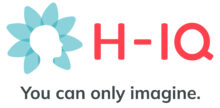Developing Imagination and Creativity in All Students
Watch the RecordingListen to the Podcast
If, as many educators say, today’s students will work in jobs that don’t exist yet and use technology that hasn’t been invented, how do we prepare them? According to Dan Hunter, author of Learning and Teaching Creativity, and Dr. Rex Jung, President of Brain and Behavioral Associates, we teach students to understand and embrace their imagination. During the edLeader Panel “Creativity in and Out of the Classroom,” they discussed key aspects of imagination and creativity and how they help students become productive problem solvers.
First, Hunter said educators should understand the difference between imagination, creativity, and innovation. He described imagination as thinking about a problem, visualizing scenarios, and predicting possible outcomes. It’s a personal, private process that can go in many directions.
Creativity is where you try to implement the idea—your success is often judged on whether it meets society’s expectations. And finally, innovation is when you have tangible value and an idea of your success after you’ve implemented your creative plan. Overall, Hunter explained that imagination is the most important component because it’s where all ideas begin, and it solves the problem we are facing now.
Next, educators need to think about what it means to teach creativity and imagination. After all, if teachers develop an assignment where they can predict what each student will do—or where all of the outcomes will be remarkably similar—then the work isn’t asking them to tap into their imagination at all. Instead, students need projects that ask them to tap into their imagination.
One example from Hunter was a project from his youth when his class was learning the bones of the skeleton. Rather than having the kids memorize the names of the bones and then take a test, the teacher had the students build their own skeletons. Other than a few requirements, students were free to use whatever materials they needed to present their finished work. Hunter stated that he understands that classrooms driven by metrics and performance can make it hard to feel like there is room for creativity, but it’s essential.
Beyond class assignments, Jung said that another key to helping students build their imagination is more recess, or at least free time, where kids have time to let their ideas flow. People, he explained, need to put out a lot of ideas to learn and figure out what’s good or bad. Imagination requires persistence, playfulness, and time with ideas, and that free time outside of the classroom is where kids can let ideas bounce off of each other. Kids need space to think through their ideas, and how they would work in the real world, and then see if they work or lead to mistakes or embarrassment.
In addition, kids need adequate sleep to nurture their imaginations. While you are sleeping, explained Jung, your mind may turn to a problem you’re working on. These random thoughts about an issue can bump into dreams and other ideas and help you come up with solutions. Similarly, Hunter said that many individuals have success when they stop focusing on the problem and do something else. This incubation period allows your brain to continue processing an issue while you shower, sleep, exercise—whatever works for you. So, building these breaks into the school day, in addition to recess, can help students use their imagination.
Finally, teachers need to help students tune into how their imagination works. In other words, while a student’s final outcome may not be successful, teachers need to focus as much on the process the student went through as they do the result. Ask students to consider what they were thinking about, where they were, and what they were trying to accomplish. Are there certain activities that help them generate ideas, like taking a shower or playing a game? Do they think better in groups or by themselves? Do they think more in images? Once they understand how they generate ideas, they are more likely to be able to replicate the ability.
Overall, the best way to help students learn how to use imagination and creativity is through practice. They need multiple situations that require them to use their imagination, and they need the space to fail, try again, fail again, and so on.
Learn more about this edWeb broadcast, Creativity in and Out of the Classroom, sponsored by H-IQ.
Watch the RecordingListen to the Podcast
Join the Community
The Brain and Learning is a free professional learning community where educators, scientists, and academics can collaborate on the science behind the brain and learning to improve student achievement.

Article by Stacey Pusey, based on this edLeader Panel





Comments are closed.